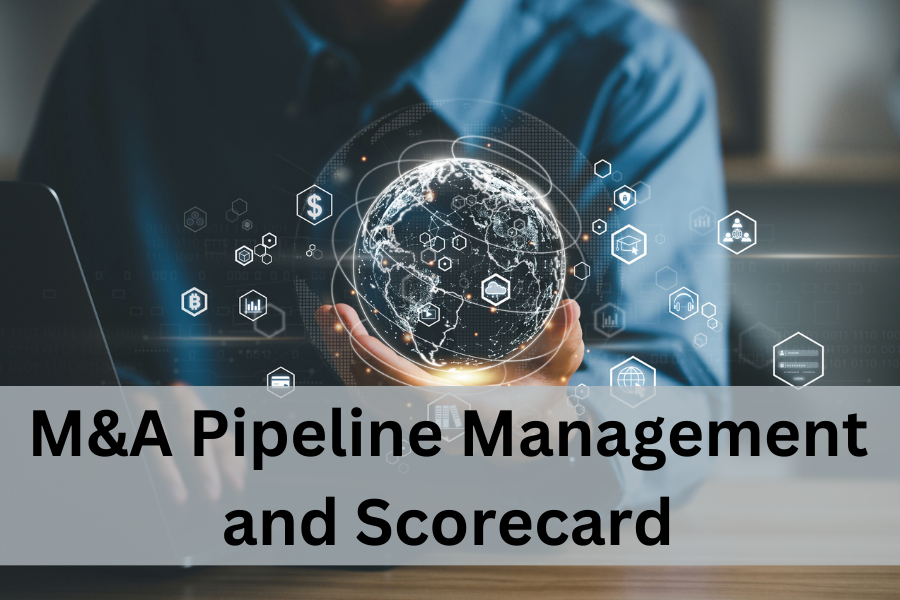Michael’s M&A Playbook: The Secret to Successful M&A: Cultural Fit
One of the most important, yet often overlooked, elements of a successful M&A deal is cultural fit. Without the appropriate alignment of culture, the integration of two companies can prove to be an insurmountable challenge. In this post, we explore why cultural fit is such a crucial factor in M&A deals, how to assess it during due diligence, and strategies for prioritizing it throughout the integration process.
Michael’s M&A Playbook: Strategy Development and M&A
Strategy development is an essential management process formulating a clear guidance and action plan to achieve long-term profitable growth. A well-crafted strategy provides a roadmap, enabling organizations to make actionable decisions and allocate financial and human resources effectively. Portfolio analysis and strategy development go hand-in-hand. This article will explain how to use a strategic portfolio analysis to develop the M&A strategy.
Mastering Talent Retention in M&A
Mergers and acquisitions (M&A) bring together organizations to create synergies, expand market presence, and drive growth. While M&A transactions hold tremendous potential, they pose significant challenges, particularly when retaining talented employees during integration. The successful retention of key talent is crucial for preserving knowledge, maintaining productivity, and achieving the desired outcomes of the merger. This article explores essential strategies organizations can employ to navigate talent retention in M&A and foster a harmonious transition.
5 Regulatory Considerations That Could Make or Break Your Next Merger and Acquisition
Mergers and acquisitions have become increasingly popular as companies strive to expand and diversify their offerings. However, these transactions also come with risks. Regulatory considerations can make or break an M&A deal, and companies must know the legal landscape before pursuing any transaction. From antitrust to labor and employment laws, we will explore the most critical regulatory risks that could derail your next M&A deal.
Michael’s M&A Playbook: Why Cross-Border M&A is the Key to Global Business Success
In a world where businesses are constantly seeking ways to stay ahead of the competition, one approach stands out as particularly effective: cross-border mergers and acquisitions (M&A). With the ability to access new markets and customers, diversify products and services, and reap increased economies of scale, it's no wonder that companies are turning to cross-border M&A as a key strategy for global success. In this post, we'll explore why cross-border M&A is crucial for global business success, the challenges companies may face, and effective strategies for achieving success.
Michael’s M&A Playbook: After-Action Reviews in M&A
Continuous improvement is a fundamental concept many companies have applied for decades to learn from past problems. You can use various methods to implement it, such as Kaizen or Lean Six Sigma. In its simplest form, companies use a lessons-learned process. Another helpful tool that facilitates this process is the After-Action Review (AAR), and I’m focussing in this article on this method and how you can use it in M&A.
Michael’s M&A Playbook: Company Valuation
Company valuation is a fundamental business topic. Boards, executives, and employees focus their planning and actions on increasing the company's value. But how do you calculate it? In this chapter, we dig into the details of intrinsic and market value and show you the most common valuation techniques. You need those methods during the whole M&A process: For the term sheet (where you include a purchase price), during the negotiations (to finalize the purchase price), and for the valuation topics in accounting and financing after the closing.
M&A Career Tips from Eli Kemmerer, Partner at RSM
M&A is an exciting area. Small and big global companies try their best to add value to their businesses with M&A, and we read almost every day about billion-dollar deals. In my M&A Playbook, we discuss the M&A process and best practices, but how do you start a career in M&A? And how do you advance from more focused M&A jobs to the overall responsibility for M&A transactions? Is there only one way or many different approaches? I spoke with Eli Kemmerer, Partner Transaction Advisory Services at RSM, who has a long, successful career in M&A, about those topics and what tips he can give.
Michael’s M&A Playbook: Why Communication Is The Make Or Break In Mergers And Acquisitions
The success of M&A hinges on effective communication, and poor communication can lead to costly mistakes. In fact, according to a study by KPMG, more than half of all M&A deals fail due to cultural differences and communication breakdowns. This article will explore the critical role of communication in M&A, provide best practices for effective communication, and offer tips for ensuring successful M&A activity.
Michael’s M&A Playbook: Tips for Portfolio Analysis and the Impact on M&A
As part of regular strategy meetings, companies should always include a portfolio analysis. Portfolio reviews serve as a critical tool to assess the performance of their products, services, and investments. By conducting a comprehensive portfolio review, companies can identify opportunities for growth, optimize resource allocation, and adapt to market dynamics. Let’s dive into the significance of portfolio reviews, how they contribute to a company's success, and what role they play in an M&A process.
Michael's M&A Playbook: Investment Thesis and Value Capture in M&A
At its core, mergers & acquisitions is a tool to achieve a specific company goal. It can be geographic market growth, portfolio expansion, cost savings based on synergies, or the improvement of the market position. Ultimately, the big question is whether you add value to your company with M&A, and here come the topics of value capture and investment thesis in the game. Have fun reading more about those topics in this article.
Michael’s M&A Playbook: 5 Financing Tips for the Post-Closing Phase
In many M&A transactions, there are opportunities to improve the cash position in the post-closing period in addition to operational performance improvement/restructuring plans. Besides the more complex equity financing or corporate bonds, there are other less complicated opportunities. You can use this additional liquidity to finance your growth plans, restructuring projects, or to refinance debt. Here are some examples from my past M&A transactions that will help you improve the liquidity in your next M&A deal.
Michael’s M&A Playbook: 7 Tips for the Legal Due Diligence
The legal due diligence process is one of the fundamental elements of the overall due diligence process. The reason is that every aspect of a company has at least some legal touchpoint. Whether you talk about employees or analyze assets and liabilities on the balance sheet, there is a legal topic that you need to address in the due diligence. Here are some of my M&A tips to help you with your next legal due diligence.
Michael’s M&A Playbook: Practical Tips for M&A Negotiations and Closing
After all of your work on the M&A pipeline development, ranking the targets on a scorecard, initial discussions, LOI/term sheets, and due diligence, it is time to finalize the negotiations and close the deal. Negotiation is an art and skill you can learn. There are many good books and seminars that help you with that, but here are a few tips that I found valuable and practical during my negotiations.
Michael’s M&A Playbook: 5 Tips for A Successful Financial Due Diligence
The main focus of the financial due diligence is on the facets of the accounting approach (i.e., accounting standards and policies), cash management (treasury), and the financial performance of the company. The tax due diligence is a separate topic. Here are some tips to help you in your next M&A deal.
Michael’s M&A Playbook: 6 Best Practice Tips for a Tax Due Diligence
The due diligence process includes different teams for specific topics. Besides the legal due diligence, one of the technically more complicated topics is the tax due diligence because every country (and sometimes region) has different tax rules. As a CFO and M&A deal manager, I have worked in all of my M&A transactions with external accounting firms and internal tax experts on those topics. Here are some examples that will help you with your next tax due diligence.
Michael's M&A Playbook: M&A Pipeline Management and Scorecard
Mergers and acquisitions can be complicated, but there are best practices for success. The first step in an M&A process is to develop an M&A target pipeline and use qualitative and quantitative elements to assess the targets. Investment banks and advisors can help you to expand your M&A target pipeline. Based on your company's overall strategy and your M&A approach, you can rank the targets with the help of an M&A target pipeline scorecard. Here are a few tips that will help you with those topics. You can download a simple Excel template for the M&A target scorecard at the end of the article.
Michael’s M&A Playbook: 5 Tips for a Successful Commercial Due Diligence
In a due diligence process, you analyze the target company and try to understand whether buying the company will add value to your business. As part of the process, the commercial due diligence digs into the details of the competitive market position and other aspects of marketing and sales. Here are some best practice tips that will help you in your next M&A transaction.
Michael’s M&A Playbook: Why M&A Transactions Fail
Most M&A transactions don't add value. You can read many different statistics that show it. M&A deals can be difficult, but by following the right approach, you can add tremendous value. The focus of my M&A Playbook is to guide you through the big topics and best practices to make M&A transactions successful; however, it is also worthwhile to discuss what can go wrong.
The M&A Success Factor Nobody Teaches You at University: Relationship Building
There is one crucial success factor in mergers and acquisitions that you cannot find in textbooks or university courses, but it makes a big difference: Relationship building between the acquirer and seller. In M&A literature and articles, the focus is on analyzing the motivations, business cases, negotiations, and integrations, but it stops there. However, building a relationship between the parties makes everything easier during the M&A process. Here are some relationship-building examples to help you with your next M&A project.




















